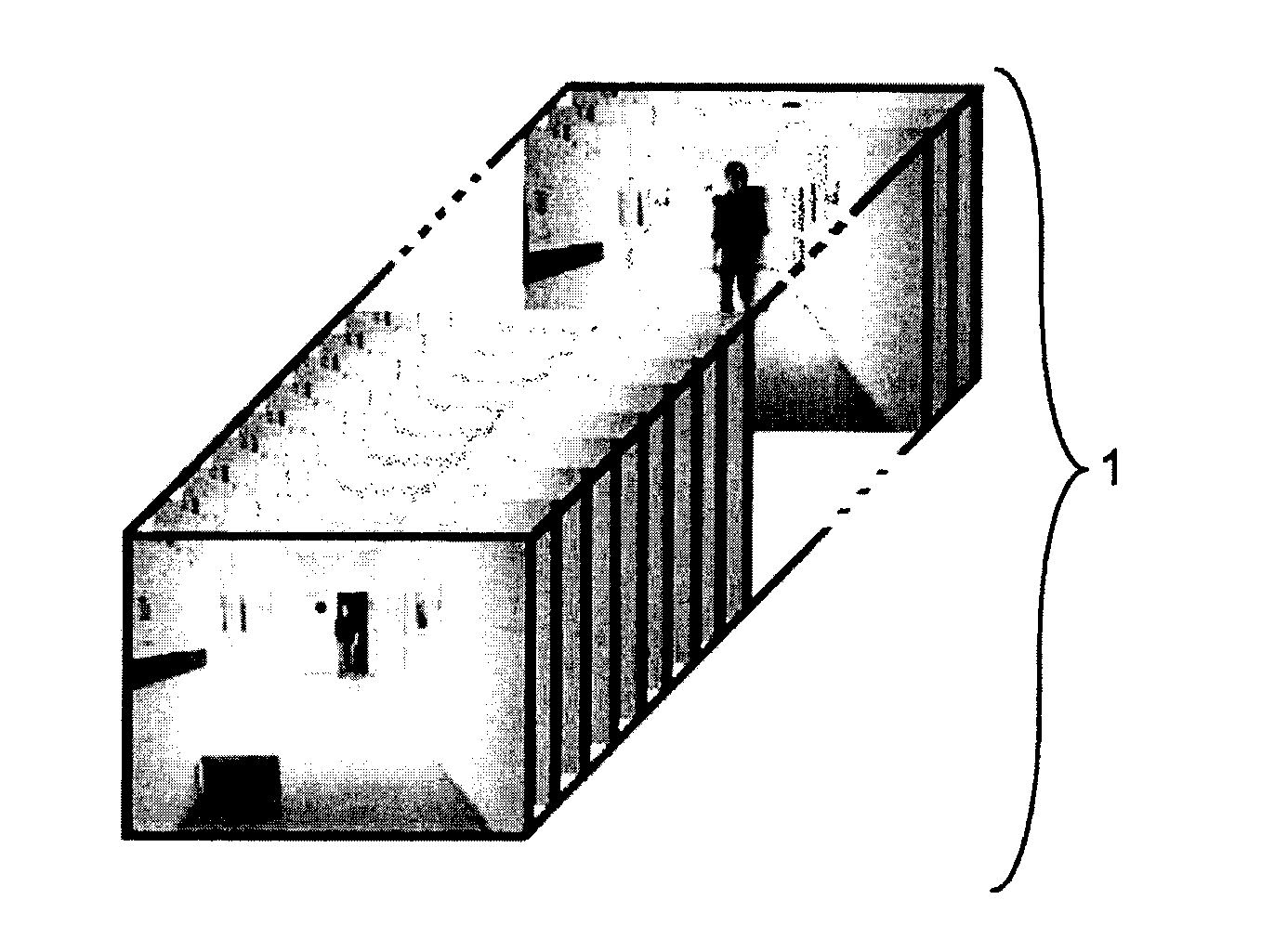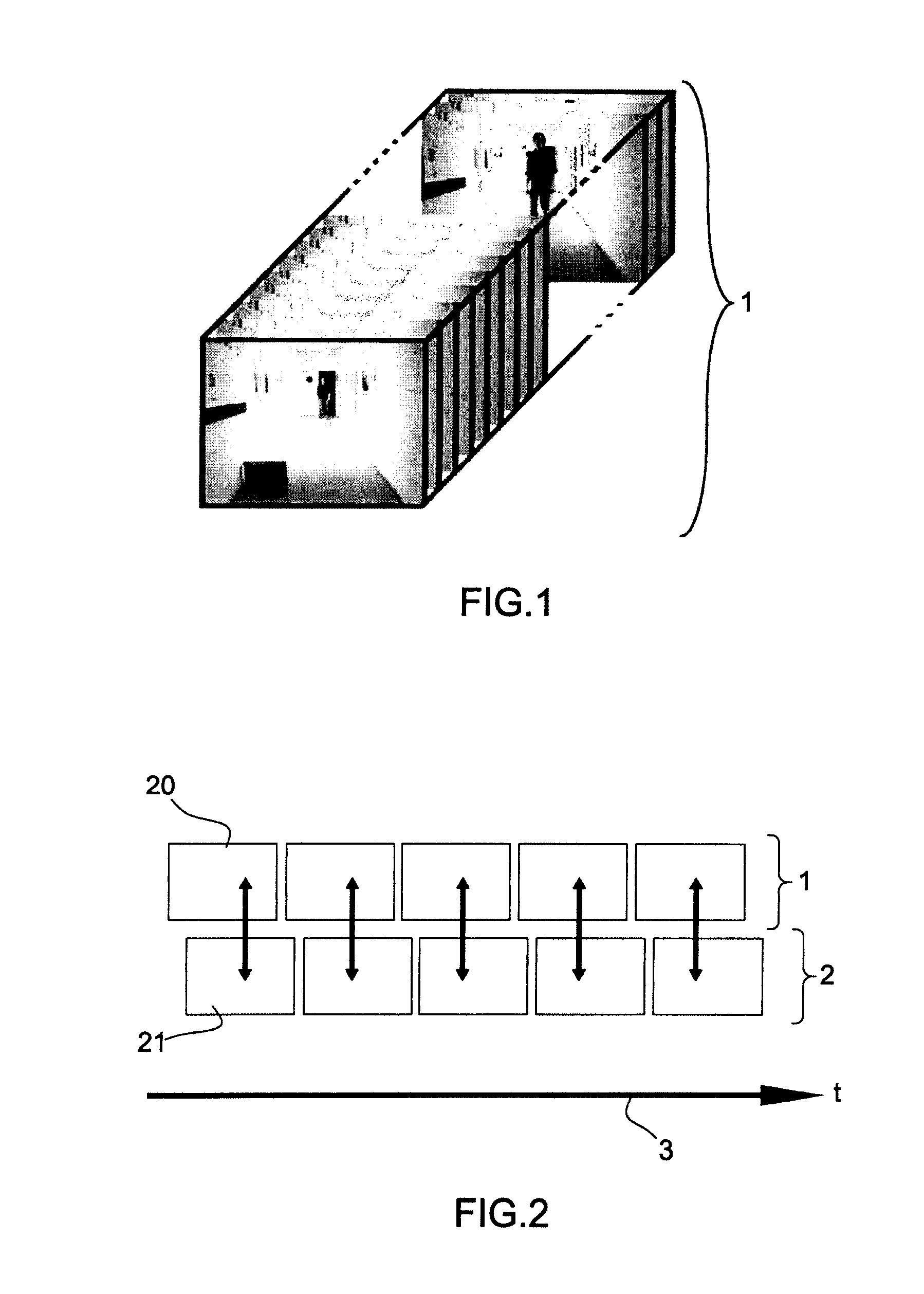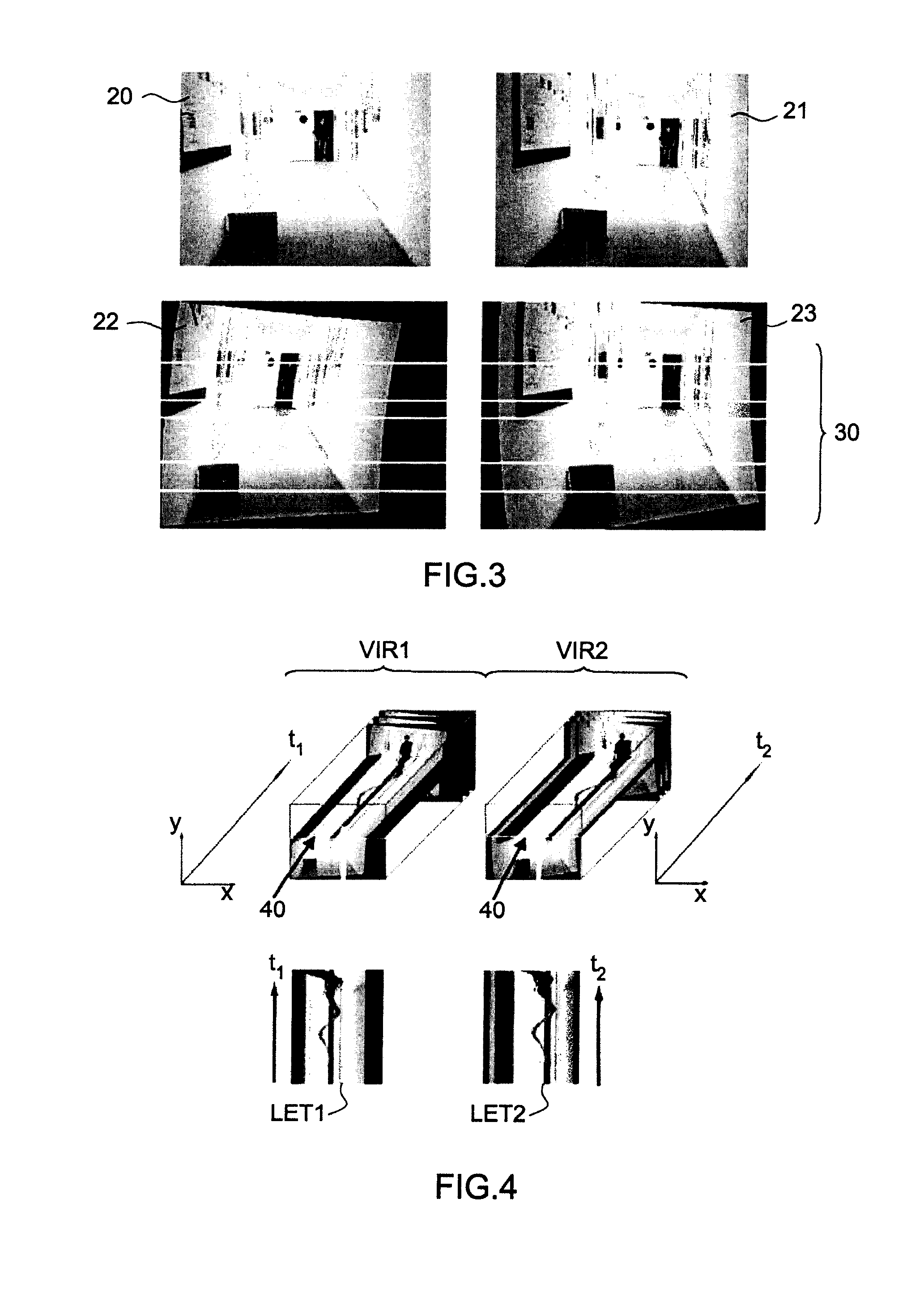Method for synchronizing video streams
a video stream and stream technology, applied in the field of synchronizing video streams, can solve the problems of inflexible implementation of synchronization via firewire port on disparate video equipment, limited number of cameras thus connected,
- Summary
- Abstract
- Description
- Claims
- Application Information
AI Technical Summary
Benefits of technology
Problems solved by technology
Method used
Image
Examples
Embodiment Construction
[0068]FIG. 1 represents a first video sequence 1 originating from a first camera filming a scene. The first video sequence is, for example, a series of images acquired at regular intervals over time by the first camera. The first camera can be the central projection type of camera such as perspective cameras, cameras with or without distortion or catadioptric systems. The first camera may also be a noncentral projection camera such as the catadioptric systems based on a spherical mirror.
[0069]The present invention applies to achieving a software synchronization of at least two video sequences originating from at least two cameras. The two cameras may be of different types. The application of the invention is not limited to the synchronization of two cameras; it is also applicable to the synchronization of a number n of video streams or video sequences originating from a number n of cameras, n being greater than or equal to two. However, to simplify the description of the invention, ...
PUM
 Login to View More
Login to View More Abstract
Description
Claims
Application Information
 Login to View More
Login to View More - R&D
- Intellectual Property
- Life Sciences
- Materials
- Tech Scout
- Unparalleled Data Quality
- Higher Quality Content
- 60% Fewer Hallucinations
Browse by: Latest US Patents, China's latest patents, Technical Efficacy Thesaurus, Application Domain, Technology Topic, Popular Technical Reports.
© 2025 PatSnap. All rights reserved.Legal|Privacy policy|Modern Slavery Act Transparency Statement|Sitemap|About US| Contact US: help@patsnap.com



